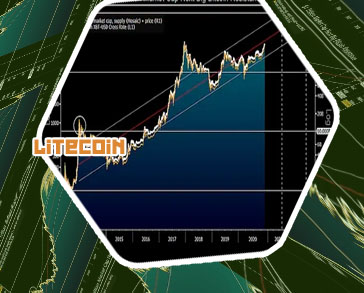

Head To Head Comparison Between Bitcoin and Litecoin (infographics)
How do computing power and solving puzzles translate into fortunes? The energy spent mining Litecoin is hogged by powerful processors that race to solve crypto puzzles faster than the others. Litecoin miners who solve the puzzle first and, therefore, add the new block get rewarded with a Litecoin reward of 12.5 LTC as of January 2022. The 12.5 LTC reward is expected to remain until August 2023 during the next halving period. Litecoin rewards are a solution where everyone benefits for every participant in the network because miners can make money for their work while other users enjoy network security. The product is a practical way of making peer-to-peer transactions. Bitcoin cash vs litecoin The main differences between litecoin and bitcoin are: 1) the max supply of units which, in the case of litecoin, is four times greater than bitcoin's (20 million); 2) LTC transaction fees are cheaper; 3) transactions are much faster with litecoin.
Litecoin limited supply
 Like Litecoin (LTC), Bitcoin Cash (BCH) benefitted from the Bitcoin ETF story, which boosted the entire crypto market. Also, Santiment data shows that whales purchased 170,000 BCH during Bitcoin Cash’s (BCH) rally between June 21-June 30, 2023. Why You Should Understand the Difference Between Bitcoin and Other Cryptocurrencies Bitcoin Cash price rally finds its legs in the rising large volume transactions on the network. According to IntoTheBlock data, there were 161 large volume transfers of BCH on June 19, Tuesday, more than the 59 seen over the weekend.
Like Litecoin (LTC), Bitcoin Cash (BCH) benefitted from the Bitcoin ETF story, which boosted the entire crypto market. Also, Santiment data shows that whales purchased 170,000 BCH during Bitcoin Cash’s (BCH) rally between June 21-June 30, 2023. Why You Should Understand the Difference Between Bitcoin and Other Cryptocurrencies Bitcoin Cash price rally finds its legs in the rising large volume transactions on the network. According to IntoTheBlock data, there were 161 large volume transfers of BCH on June 19, Tuesday, more than the 59 seen over the weekend.
Mining Bitcoin Cash
Litecoin, like Bitcoin, undergoes halving events roughly every four years. During these periods, the reward for mining each block is halved, slowing the creation rate of new Litecoins. This not only preserves scarcity but can also bolster the value of existing Litecoins. Countdown to Litecoin halving today, is ‘digital silver’ ready to break out? From the hard fork on August 1, 2017, Bitcoin Cash was born, increasing the capacity limit of each block. The purpose of the fork was to raise the number of transactions that can be processed by increasing the block size to 8 MBs against 1 MB of bitcoin.
Litecoin review
Litecoin also uses the Scrypt hashing algorithm that utilizes much less processing power than the Bitcoin SHA256 hashing algorithm. Placing a higher emphasis on utilizing high-speed RAM, Litecoin makes it much less possible for a single player (or small collective group of big players) to dominate the mining world. What is Litecoin used for? Bitcoin was the first cryptocurrency to be traded back in March 2010 and is often credited with bringing blockchain technology into the spotlight. Having a first-to-market advantage has certainly helped with its media exposure and its ability to sign up new merchants. In many instances, bitcoin is the cryptocurrency that investors will need to buy to exchange for less popular digital currencies on decentralized exchanges.
 Like Litecoin (LTC), Bitcoin Cash (BCH) benefitted from the Bitcoin ETF story, which boosted the entire crypto market. Also, Santiment data shows that whales purchased 170,000 BCH during Bitcoin Cash’s (BCH) rally between June 21-June 30, 2023. Why You Should Understand the Difference Between Bitcoin and Other Cryptocurrencies Bitcoin Cash price rally finds its legs in the rising large volume transactions on the network. According to IntoTheBlock data, there were 161 large volume transfers of BCH on June 19, Tuesday, more than the 59 seen over the weekend.
Like Litecoin (LTC), Bitcoin Cash (BCH) benefitted from the Bitcoin ETF story, which boosted the entire crypto market. Also, Santiment data shows that whales purchased 170,000 BCH during Bitcoin Cash’s (BCH) rally between June 21-June 30, 2023. Why You Should Understand the Difference Between Bitcoin and Other Cryptocurrencies Bitcoin Cash price rally finds its legs in the rising large volume transactions on the network. According to IntoTheBlock data, there were 161 large volume transfers of BCH on June 19, Tuesday, more than the 59 seen over the weekend.

